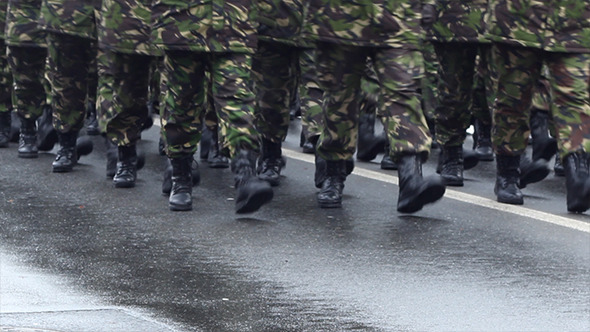By C. ben-David
An opinion piece titled “Going forward” in the March 24, 2017 edition of Searchlight newspaper in which Christian I. Martin, arguably the most respected and influential civil servant our country has ever produced, presented an argument for the need to enhance direct foreign tourism investment in our tiny, export-driven but resource-poor country which reminded me of two other Searchlight essays he had written.
In a July 31, 2008 editorial, he revealed that, “When Milton Cato’s … Labour Party acceded to office in 1967, he got the British Government to finance a study which considered … whether St. Vincent should have an International Airport. The study … concluded that as so many of the neighbouring islands had jet airports, none was needed in St. Vincent,” an assessment Martin has strongly rejected ever since. But he failed to also mention that the Honourable Dr. Ralph E. Gonsalves’ government decided to build an international airport at Argyle in 2005 without the benefit of a detailed economic feasibility study in which the British conclusion was successfully impugned.
This may be why in yet another Searchlight op-ed on February 27, 2015, Martin opined that “… our [Argyle] airport is literally being built on a wing and a prayer.”
All three opinion pieces are joined at the hip.
The absence of a comprehensive study, including assessment of the realistic costs and achievable benefits of such a costly endeavor, certainly confirms his “wing and a prayer” assertion and equally off-putting concluding comment that, “Whatever its advantages and disadvantages, SVG is what we have.” But his 2008 article, where he makes highly abbreviated reference to airports among some of our neighbours, including St. Lucia, Grenada, and Dominica, fails to convince this social scientist that, “Social scientists would regard this as empirical evidence that the airport is needed and that the [British] study got it completely wrong.”
St. Lucia had a robust and growing tourism industry long before it built its Hewanorra International Airport in 1973 yet still has an unemployment rate of 25 percent; Grenada which received its airport free of charge by the efforts of the Cuban and American governments in 1984, as its tourist numbers were increasing year after year, still sees 29 percent of its working population unemployed; St. Vincent and the Grenadines, whose Argyle International Airport (AIA) became operational only a few weeks ago, saw almost one thousand fewer passengers land at Arnos Vale in 2016 than the average of the 2001-16 period but has the lowest unemployment rate of the three at 19 percent.
These figures reflect the seasonal nature of employment and the overseas repatriation of most of the profits in the foreign-controlled Caribbean holiday industry.
As for Dominica, still considering the construction of an international airport, the country saw 240 percent more stopover tourist visitors land at its regional airport in 2015 than we did at ours, a critical observation given Minister of Tourism Cecil McKie’s recent pronouncement that the World Bank has estimated that Argyle International Airport (AIA) would see visitor levels increase by a mere 10 per cent within its first three years of operation.
In short, the international airports in St. Lucia and Grenada were built to meet a growing visitor demand while the lack of an international airport in Dominica has not prevented that country from growing its tourist numbers to levels we could only dream about regardless of how much passenger growth is stimulated by AIA.
A missing link that also unites the three Martin essays and explains all the above is any discussion of, “Whatever its advantages and disadvantages, SVG is what we have,” which I take to mean the various features we have that would attract thousands more visitors to the mainland because of the completion of AIA. Mr. Martin inadvertently tiptoes around this missing link when he now writes, “We have several small hotels [on the mainland] and this is good. However, the real big earners for our tourism are places like Mustique and Canouan.”
Why is this so?
Tripadvisor, the world’s largest travel site lists the number of “things to do” in St. Lucia as 566, in Grenada as 257, and in St. Vincent Island as 68, figures closely correlated with overseas visitor levels, proving that attractions bring tourists, not the reverse.
The problem is not, as Mr. Martin claims, a paucity of foreign hospitality industry investors, as our experience with the Buccament Bay resort should teach us, as should other types of direct foreign mainland investment in shady offshore banking schemes and the fraudulent Ottley Hall Marina. The problem is attracting honest, competent, experienced, and moneyed overseas entrepreneurs to invest in sectors that have a realistic potential for increasing employment, incomes, and profits.
In sum, although we may have prospects for development in other areas
(though I can’t even name one or two, including agriculture, with any degree of confidence), I contend that we simply lack the God-given features to grow our small mainland tourist industry (an assertion I will expand upon in future essays), which is why our British colonial masters were correct in their 1967 assessment, why so many of our traditional donors said no when our Prime Minister begged them for help with AIA, why his regime was wrong to start its vainglorious construction of a needless international airport in 2008, why proportionately more of our wealthy citizens have always travelled on holiday to our two closest neighbours than their citizens have travelled here to enjoy our mainland, and why Martin is dead wrong when he claims that, “Governments in small countries inevitably have to play a bigger role in the economy than they do in larger ones,” the opening sentence in his editorial, an assertion disproven by countless examples of small countries with small governments and big countries with big governments.
***
This is the 50th in a series of essays on the AIA folly. My other AIA essays are listed below:
-
- Get ready for a November election!
- Lessons for Argyle Airport from Canada’s Montreal–Mirabel Int’l
- Lessons for Argyle Int’l Airport from the cruise industry
- Lessons from Target Canada for Argyle Int’l Airport
- Lessons from Trinidad & Tobago for Argyle Int’l Airport
- The Dark Side of Tourism: Lessons for Argyle Airport
- Why Argyle Won’t Fly: Lessons from Dominica
- Ken Boyea and the Phantom City at Arnos Vale
- Airport Envy Vincy-Style
- Fully realising our country’s tourism potential
- Airport without a cause
- The unnatural place for an international airport
- The Potemkin Folly at Argyle
- False patriotism and deceitful promises at Argyle
- Airport politics and betrayal Vincy-Style
- Phony airport completion election promises, Vincy-style
- Is Argyle Airport really a ‘huge game-changer for us?’
- Has the cat got your tongue, Prime Minister?
- More proof that Argyle won’t fly
- Our very own Vincentian cargo cult at Argyle
- The missing Argyle Airport feasibility studies
- The world’s four most amazing abandoned airports
- Farming, fishing, and foolish talk about Argyle International Airport
- Argyle Airport amateur hour
- Vincent’s place in the world of travel
- Investing in St. Vincent’s Tourism Industry
- The Argyle Airport prophecy: what the numbers say
- Why Qatar? Why St. Vincent and the Grenadines?
- Did the IMF drink the Comrade’s Kool-Aid?
- Foolish words about Argyle International Airport
- ‘If I come, you will build it’: Lessons from the Maldives for Argyle Airport
- Urban lessons for Argyle International Airport
- Who really lands at Arnos Vale?
- No ticky, No washy — Argyle-Style
- We have met the Vincentian tourism enemy and he is us
- Hotel Saint Vincent
- Why St. Vincent Island has so few tourists
- Why Bequia is a gem of the Antilles
- Why seeing is believing in the Caribbean tourism industry
- St. Vincent’s cruise ship numbers are much lower than we think
- Lessons from Barbados for Argyle Airport
- Cuba’s tourism rollercoaster: Lessons for Argyle Airport
- What the world teaches Black Sands Resort and Villas
- Not all Argyle Airport critics are ‘internet crazies’
- The media’s take on the opening of Argyle Airport
- Why Roraima Airways? Lessons for Argyle Airport
- Our Argyle International Airport ‘veritable miracle’
- From ‘poppy show’ to campaign rally: The Argyle Airport opening
- St. Vincent’s 2016 tourism numbers are nothing to brag about
The views expressed herein are those of the writer and do not necessarily represent the opinions or editorial position of iWitness News. Opinion pieces can be submitted to [email protected]
The opinions presented in this content belong to the author and may not necessarily reflect the perspectives or editorial stance of iWitness News. Opinion pieces can be submitted to [email protected].







I am glad that someone else has noticed the flawed thinking of C.I. Martin. I appreciate the fact that he addresses Macro Economics and he gathers valuable facts, but he seems to draw the wrong conclusions. Conclusions that try to make the ULP look good. Maybe he does it on purpose to let us know how bad ULP economics are. C.I. Martin had one piece praising Keynes. Although Keynes was a raging homosexual, he had many good points, including his prediction of WW2, but he was a very poor macro economist.
Massive government spending may well work to stimulate an economy as when roads and other infrastructure are built to access hard to reach areas which are then exploited by the private sector to extract subterranean resources like oil, iron ore, or precious gems.
In our case, the massive government spending on AIA to help grow the tourist industry on the mainland will be proven utterly foolish and wasteful because there are simply insufficient attractions in number and quality for the airport to make a significant difference in visitor arrivals.